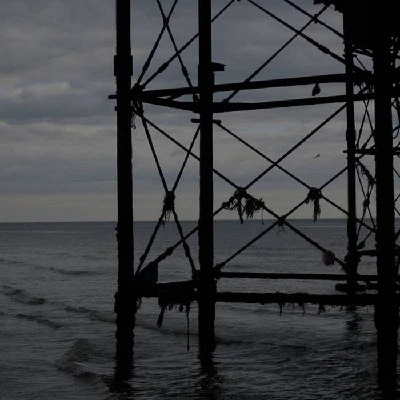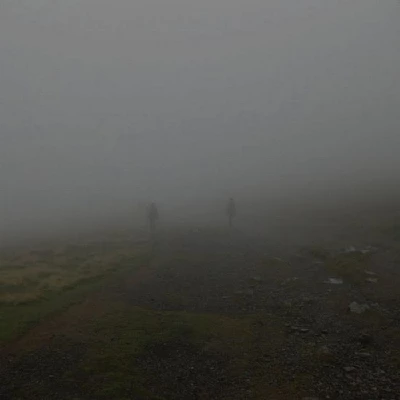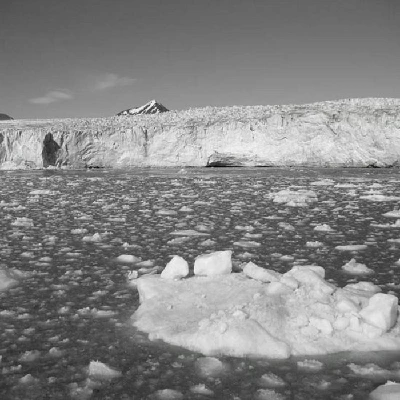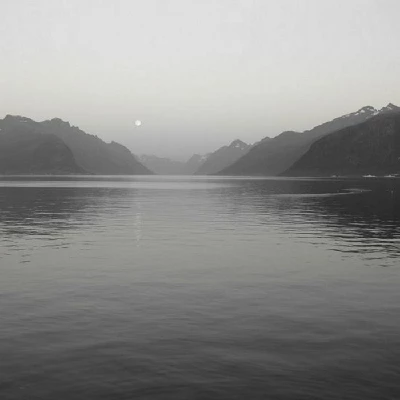published: 23 /
8 /
2016
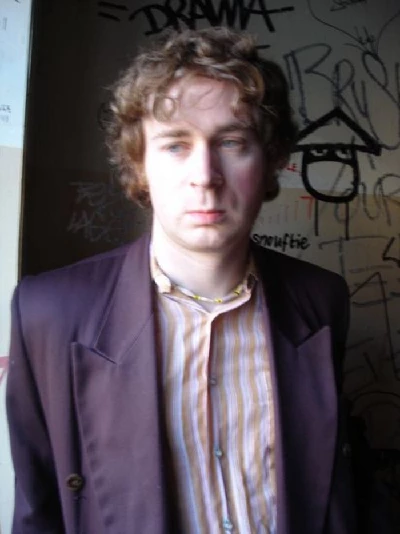
London-based experimental musician and multi-instrumentalist Dominic Simpson speaks to John Clarkson about his new solo project Dream Maps and its debut album 'In Stormy Nights', which takes much of its inspiration from UVB-76, an enigmatic Russian radio station
Article
UVB-76 is the nickname given by listeners to a mysterious Russian radio station. Known also as “the buzzer”, UVB-76 has been broadcasting since 1982 a short, monotonous buzz tone lasting approximately two seconds 24 hours a day. On rare occasions Russian voices can be heard beneath the buzzer. There has been wide speculation about what UVB-76 is and its purpose has never been confirmed, but the majority of theories tie it in with the Russian military.
For East London-based experimental musician, multi-instrumentalist and Pennyblackmusic writer Dominic Simpson, his fascination with UVB-76 has provided much of the inspiration for his solo project Dream Maps’ debut album, ‘In Stormy Nights’, which was released in January on Bandcamp.
The opening ‘Intro’ combines the ghostly voice of a Russian announcer with an escalating wall of hammering percussion, while ‘100 Bars in C-Minor/UVB-76’ closes the album in a sea of jabbing piano, sombre cello from the album’s one guest Katy English and radio static and field recordings taken from UVB-76.
Second track ‘London’s Burning’ – the most mainstream track on ‘In Stormy Nights’ - merges cascading Doors-style keyboards with a sharp, pumping one-note guitar line and a vocal appearance from Simpson on the album which is otherwise largely instrumental.
Elsewhere other tracks such as the 23 minute three-movement title track; the swirling, rapid beat ‘Gakken Analog Book’, and the brooding, reflective ‘Tower of Babel’ merge together hazy drones, thunderous sonics, ambient sounds and an arsenal of other field recordings to gripping effect. Dominic employs a wide range of instruments – guitars, piano, an assortment of synthesizers, various pieces of percussion, a drum machine and a clarinet – on ‘In Stormy Nights’ to create an album of desolate but ethereal and haunting beauty.
Dream Maps will be making its debut performance at a Pennyblackmusic Bands Night which will also feature Madam and Idiot Son at the Sebright Arms on the 1st October. We put some questions to Dominic Simpson about Dream Maps and ‘In Stormy Nights’.
PB: ‘In Stormy Nights’ was largely inspired by the enigmatic Russian radio station UVB-76. When did you first find out about UVB-76 and why did you decide to theme an album around it?
DS: I first read about UVB-76 in a copy of 'Wired' magazine, and was intrigued. I started playing audio clips of it from the Internet. The audio clips that you can hear on the album are from the website uvb-76.net, which is a big archive. You can also hear radio static, field recordings and buzzing elsewhere on the album, which contributes to the feelings of decay and isolation. There are field recordings taken by me of birds on ‘To the Birds’ (hence the name), and the acoustics of an echo chamber at the top of a disused Cold War tower in Berlin can be heard at the end of ‘Gakken Analog Book’, whose title comes from this Japanese synth that you can hear on the track; it comes with a book, but it’s all in Japanese, so I don’t know what any of it says.
PB: There are various theories about what UVB-76 is, many of which are based around the Russian military. What is your personal take on it and who do you think the ghostly voices that can sometimes be heard behind “the buzzer” are?
DS: No-one really knows what UVB-76 is for sure, and the Russian Government has refused to confirm anything, adding to the mysteriousness of it all.
From what I’ve read, it’s thought that it is part of the Russian military, and operates from an isolated building in a snowy forest near to the border with Estonia. The purpose of ‘The Buzzer’ is most likely to confirm that operators at receiving stations are alert as part of Russian military communications.
The really interesting audio clips are those where you can hear voices in the background – there’s a couple like that on YouTube. The audio clip on ‘Intro’ is of someone reeling off a list of Russian names. There’s another audio clip on YouTube where it sounds like a woman is screaming in the background, though the comments from other listeners suggest that it could just be a television on near the microphone. If you play the audio clips in the dark in your bedroom, the effect can be very creepy and intense.
PB: ‘London’s Burning’ could be seen as politically very topical but was written a while ago. Who or what inspired that song with its opening lines of “London’s burning but the lights have gone out/I called you at 3 a.m/but no one was home”?
DS: The lyrics on ‘London’s Burning’ were about the London riots in 2011, which were taking place when I was recording that track. The riots included parts of Hackney and Tottenham, areas that I grew up around.
The song title reflects the much older song ‘London’s Burning’, a nursery rhyme I learnt when I was a kid, and which was about the Great Fire of London 1666. So I was referencing the old children’s song while linking it to the riots that year. I was at home unemployed while the riots were taking place, and it was a strange feeling, knowing that this carnage was going on not far from me.
PB: The album was largely conceived and recorded in a friend’s studio. It took a long time to record. How long were you in there for?
DS: It was recorded in various home studios over a couple of years, and then in my current studio at a friend’s house. The genesis for the album goes back as far as ten years, though I wasn’t recording constantly. ‘London’s Burning’ has been around in various shapes or forms for at least that long.
For much of that time, I was busy playing in bands. There was also a period during the late 2000s, during the financial crash, when I was quite depressed and stopped doing music for a while as a result.
Yet, somewhere along the way, it occurred to me that I should concentrate on doing an album myself rather than in a band. I guess recording for the album began in earnest in around 2010. The studio has had to move around a lot as I have, which has meant a lot of equipment in boxes and stress due to lack of space (I have a lot of gear). Moving flat regularly meant the album being constantly delayed.
The current set-up for my studio is in a friend’s loft/attic space in Edmonton, north London, which also doubles as a general storage space. It’s the most favourable for me, as it means I can go there and just concentrate on music. Due to job commitments, and other commitments besides, I’ve only been able to spend about one day a week on the album. Which is frustrating, but such is life when you don’t have much money and have to work.
PB: It was rounded off and mastered in the much acclaimed Soup Studios in East London. Why did you decide to go there to finish it off?
DS: Soup Studios used to be based in the basement of the Duke of Uke, an emporium of all things ukulele that my friend Matthew runs. That incarnation of the shop was on Hanbury Street, off Brick Lane, right near Rough Trade East. My previous band Fractured Waves used to practice down there, and in the main bit of the shop there were lots of in-store gigs.
The shop has since had to move to Cheshire Street, also off Brick Lane, most likely due to rent hikes. The current Duke of Uke is right next to a pub that the Krays used to help run. When the Duke of Uke was forced to move, the studio instead moved to larger premises in Cable Street Studios, a big studio complex in Limehouse. You can feel the energy lines from the nearby Overground train.
The new Soup Studio space is really fantastic: they have some amazing equipment in there. I also recorded the piano that’s on the album there, as there is not enough space for a piano in my own studio. Soup have did stuff for Domino Records, 4AD, Julian Cope, Television Personalities...some pretty big name acts and labels.The studio is run by my friend Simon, who was once in the band Tompaulin. I’ve known him for a while, and trusted him. Otherwise I would have been going to a studio where I didn’t know anyone. We sat down and mastered the album together.
PB: The mainly monochrome photographs that accompany each track on your Bandcamp page are stunning. They look very wintry and like they were taken in some kind of Russian landscape. Where were they in fact taken?
DS: They were all taken by me in various locations. The very wintry ones involving icebergs floating in the water, and in the distance, were taken in Svalbard, a Norwegian archipelago in the Arctic Circle (near a Russian mining community called Barentsburg). The album front cover was taken below Brighton Pier. The photo for ‘In Stormy Nights (Part 1)’ was taken while I was on top of a mountain in the Lake District, Cumbria, with the fog falling around us. The gloomy figures that you can see in the distance were just some fellow hikers – the fog was so dense that they couldn’t see me taking a picture of them. Other pictures were taken in various locations in the UK, all the way from Devon to the Orkneys. Really desolate Northern European landscapes like that interest me.
With the photography, I’m trying to set a mood for the music. So they are a kind of visual accompaniment, if you like. That seems to me a lot more interesting than just a photo of me inanely grinning at the camera.
PB: At many points on the album it sounds like there is a full band rather than just yourself. It must have involved lots of instrumentation. How many instruments in fact appear on the album?
DS: Lots, and all were played by me through overdubbing, except for the cello that appears in some tracks. That was played by my friend Katie English, who records under the name Isnaj Dui. She used to run a night called Recluse in London, where I played live numerous times.
There’s a lot of instrumentation on there, from a standard band set up (including both a drum machine and live percussion) to clarinet, piano, various percussive instruments, old analogue synths, and household appliances.
PB: The Pennyblackmusic show will be Dream Maps’ first ever gig. Given the arsenal of instrumentation involved so far, how do you intend to transfer what has been so far a studio project to the stage?
DS: I’ve been working on the live set-up and it’s coming along well. There is going to be quite a bit of equipment onstage. I won’t be able to realise it exactly as it sounds on the album, but it’ll be close. Hopefully I’ll be able to by a sequencer soon, which will help the live set-up.
PB:‘In Stormy Nights’ has only been available through Bandcamp and digitally. Do you hope eventually to release a CD or vinyl edition? What other plans do you have for the future?
DS: Yes, I would absolutely like to release the album on CD and vinyl. My hope is that there would be a budget to include the photography that’s on the Bandcamp page inside the CD and vinyl sleeves, so that way there is some really interesting packaging. I’ve already got some ideas. You have to make physical releases especially interesting now, given that they’re battling downloads in this day and age. I think labels such as Constellation Records and Fat Cat handle that really well, with innovative and unique packaging. I’m hoping some labels will be interested in releasing it.
Apart from that, I already have some new songs ready to record. I just need to find the time on top of rehearsing my live set. I’ve got a number of instruments in the studio – from accordion to ukulele – that I haven’t even used yet, and would like to.
PB: Thank you.
Tickets for the Pennyblackmusic Bands' Night on the 1st October with Madam, Idiot Son And Dream Maps are available in advance for £6 from We Got Tickets http://www.wegottickets.com/event/368261 and on the door on the night for £7. Dream Maps will be on stage at 8.15 p.m.
Picture Gallery:-
